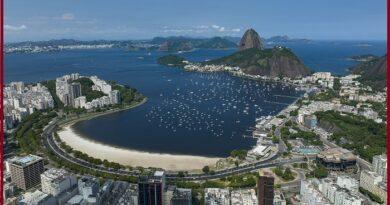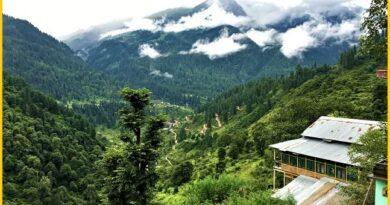Beyond the Capital: Exploring Belgium’s Vibrant Cities
Best cities to visit in Belgium
Belgium is known for its rich history, beautiful architecture, and vibrant culture. Here are some of the best cities to visit in Belgium.
1. Brussels
The capital city, Brussels, is famous for its stunning Grand Place, Atomium, Manneken Pis statue, and a variety of museums. The city’s diverse culinary scene, including its world-renowned chocolates and beers, makes it a must-visit. Key Attractions included
Grand Place (Grote Markt)- A UNESCO World Heritage site, this central square is surrounded by opulent guildhalls, the Town Hall, and the King’s House (Maison du Roi). The square hosts events such as the Flower Carpet, a biennial event where the square is covered with a large carpet of flowers.
Atomium- An iconic structure originally built for the 1958 Brussels World Expo (Expo 58). It resembles an iron crystal magnified 165 billion times. Visitors can explore various exhibitions inside the spheres and enjoy panoramic views of Brussels.
Manneken Pis- A small bronze statue of a boy urinating in a fountain. It is a symbol of Brussels’ irreverent sense of humor. The statue is often dressed in various costumes, which are changed several times a week.
Royal Palace of Brussels- The official palace of the Belgian king, although it is not the royal residence. The palace is open to the public during the summer months, offering a glimpse into the opulent interiors.
Parc du Cinquantenaire (Jubelpark)- A large public park with impressive arches, museums, and gardens. Home to the Royal Museum of the Armed Forces and Military History, the Art & History Museum, and Autoworld.
Also Read- Wanderlust Wonders: Exploring Top Holiday Destinations
2. Bruges
Often referred to as the “Venice of the North,” Bruges is renowned for its picturesque canals, medieval architecture, and charming cobbled streets. Bruges, known as Brugge in Dutch, is a city in the Flemish region of Belgium that captures the essence of medieval Europe with its well-preserved architecture, picturesque canals, and rich cultural heritage. Key Attractions included –
Belfry of Bruges (Belfort)- A medieval bell tower located in the heart of Bruges. Climb the 366 steps to the top for panoramic views of the city. The tower houses a carillon of 47 bells.

Market Square- The central square of Bruges, is surrounded by historic buildings and lively cafes. Features the Provinciaal Hof (Provincial Court), various guild halls, and often hosts markets and events.
Basilica of the Holy Blood (Heilig-Bloedbasiliek)-A Roman Catholic basilica known for housing a relic of the Holy Blood. The basilica consists of a lower Romanesque chapel and an upper Gothic chapel, adorned with beautiful stained glass and artwork.
Church of Our Lady (Onze-Lieve-Vrouwekerk)- A stunning Gothic church famous for its art and architecture. Home to Michelangelo’s “Madonna and Child” sculpture and the tombs of Charles the Bold and Mary of Burgundy.
Begijnhof (Beguinage)- A serene and historic complex that was once home to the Beguines, a lay religious community of women. The white-painted houses, tranquil gardens, and a small museum offer a glimpse into the life of the Beguines.
3. Ghent
Ghent is a vibrant university city with a rich history. Notable sights include the Gravensteen Castle, St. Bavo’s Cathedral (home to the famous Ghent Altarpiece), and the beautiful Graslei and Korenlei streets along the river. Ghent was one of the most powerful cities in Europe during the Middle Ages, known for its prosperous textile industry. The city’s historical significance is evident in its well-preserved architecture and numerous landmarks. Key Attractions included-
Gravensteen (Castle of the Counts)-A medieval castle located in the heart of Ghent, built in the 12th century. The castle features an extensive exhibit of medieval torture devices and offers panoramic views of the city from its ramparts.
St. Bavo’s Cathedral (Sint-Baafskathedraal)-A Gothic cathedral renowned for its art and architecture. Home to the famous Ghent Altarpiece (Adoration of the Mystic Lamb) by Jan and Hubert van Eyck, and a stunning collection of other artworks.
Graslei and Korenlei- Two picturesque streets along the river Leie, known for their beautiful historic buildings. A popular spot for strolling, dining, and taking boat tours on the river.
Belfry of Ghent (Belfort)- A UNESCO World Heritage site, this medieval bell tower is one of the three iconic towers of Ghent. Visitors can climb to the top for spectacular views and learn about the history of the city’s belfry and its bells.
4. Antwerp
Known as the diamond capital of the world, Antwerp boasts a lively arts scene, impressive architecture, and a bustling port. Antwerp, or Antwerpen in Dutch, is Belgium’s second-largest city and a major cultural and economic hub. Known for its port, diamond trade, and vibrant arts scene, Antwerp offers a blend of historical charm and modern vitality. Key Attractions included-
Cathedral of Our Lady (Onze-Lieve-Vrouwekathedraal)-A stunning Gothic cathedral, one of the tallest buildings in the city. Home to masterpieces by Rubens, including “The Descent from the Cross.”
Grote Markt (Great Market Square)- The historic central square of Antwerp, surrounded by guild halls and the city hall. Features the Brabo Fountain, which tells the legend of the city’s founding.
Museum aan de Stroom (MAS)- A striking modern museum located in the Eilandje district. Offers exhibitions on Antwerp’s history, culture, and connection to the world. The rooftop provides panoramic views of the city.
Rubenshuis (Rubens House)-The former home and studio of the Baroque painter Peter Paul Rubens. Visitors can explore Rubens’ life and work through his well-preserved home and gardens.
Antwerp Zoo- One of the oldest zoos in the world, located near the Central Station. Features a wide variety of animals and beautifully landscaped gardens.
5. Leuven
Leuven, also spelled Louvain, is a vibrant university city located in the Flemish region and Best cities to visit in Belgium. Known for its prestigious university, rich history, and lively cultural scene, Leuven offers a charming mix of old-world charm and youthful energy. The city features the stunning Town Hall, the Old Market Square, and the M-Museum Leuven. Its lively atmosphere is complemented by numerous cafes and bars. Leuven’s history dates back to the early Middle Ages. It gained prominence in the 11th century and was granted city rights in 1190. Home to the Katholieke Universiteit Leuven (KU Leuven), founded in 1425, one of the oldest and most renowned universities in Europe. Key Attractions included-
Town Hall (Stadhuis)-A stunning Gothic building from the 15th century, known for its elaborate architecture and numerous statues. The Town Hall’s facade features intricate sculptures representing biblical figures, saints, and local dignitaries.
St. Peter’s Church (Sint-Pieterskerk)- A Gothic church located in the main square (Grote Markt), notable for its art and architecture. Houses “The Last Supper” by Dirk Bouts and other significant artworks. The church also has an impressive bell tower.
University Library and Ladeuzeplein-A historic library rebuilt after World War I, symbolizing resilience and recovery. The library tower offers panoramic views of the city, and Ladeuzeplein is a vibrant square that hosts various events and markets.
Old Market Square (Oude Markt)- Often called the “longest bar in the world” due to its numerous cafes and bars. A lively area where students and locals gather, especially popular during warm weather.
Beguinage (Begijnhof)- A UNESCO World Heritage site, this beguinage is a serene enclave of medieval houses and cobbled streets. Offers a peaceful retreat and insight into the life of the Beguines, a lay religious community of women.
6. Mechelen
Mechelen, or Malines in French, is a charming city located in the Flemish region of Belgium. Known for its historical significance, beautiful architecture, and vibrant cultural scene, Mechelen offers a unique blend of past and present. Mechelen is a lesser-known gem with beautiful historic buildings and a rich cultural heritage. Visitors can explore St. Rumbold’s Cathedral, the Museum Hof van Busleyden, and the bustling Grote Markt. Key Attractions included-
St. Rumbold’s Cathedral (Sint-Romboutskathedraal)- A stunning Gothic cathedral and one of Mechelen’s most iconic landmarks. Climb the 538 steps of the tower for panoramic views of the city. The cathedral houses remarkable artworks and the remains of St. Rumbold.
Grote Markt (Great Market Square)- The central square of Mechelen, is surrounded by beautiful historical buildings and lively cafes. Features the Town Hall (Stadhuis) and the historic guild houses, creating a picturesque setting.
Margaret of Austria’s Palace (Hof van Savoye)-A Renaissance palace that was the residence of Margaret of Austria, the regent of the Netherlands. One of the earliest Renaissance buildings in Northern Europe, now housing the Court of Appeal.
Palace of the Great Council (Hof van Busleyden)- A historic palace that served as the seat of the Great Council of Mechelen. Currently a museum showcasing the history and culture of Mechelen, including exhibits on Burgundian history.
Mechelen Toy Museum (Speelgoedmuseum)- One of the largest toy museums in Europe. Displays a vast collection of toys from different eras and cultures, offering a nostalgic journey through childhood.
7. Liège
Liège is a historic city located in the French-speaking region of Wallonia and Best cities to visit in Belgium. Known for its industrial heritage, vibrant culture, and rich history, Liège offers visitors a diverse array of attractions and experiences. Liège offers attractions such as the impressive Liège-Guillemins railway station, the historic Prince-Bishops’ Palace, and the lively La Batte Sunday market destination. Liège traces its roots back to Roman times when it was known as Leodium. Its strategic location on the Meuse River contributed to its early development. Key Attractions included-
Liège Cathedral (Collégiale Saint-Paul)-A stunning Gothic cathedral dating back to the 10th century, known for its ornate architecture and historical significance. The cathedral houses a treasury with religious artifacts and offers panoramic views from its tower.
Montagne de Bueren-A steep staircase with 374 steps, often considered one of the world’s most challenging staircases. Climbing the Montagne de Bueren rewards visitors with panoramic views of the city and surrounding area.

Curtius Museum (Musée Curtius)- A museum housed in a former mansion, showcasing artifacts related to archaeology, decorative arts, and regional history. features exhibits on the history of Liège, including its medieval past and industrial heritage.
La Batte Market- One of Europe’s largest and oldest outdoor markets, held every Sunday along the Meuse River. Offers a diverse range of products, including fresh produce, clothing, antiques, and local specialties.
The Perron- A symbol of Liège’s municipal freedom and autonomy, the Perron is a stone column topped with a crown. Located in the heart of the city, the Perron serves as a gathering place and a reminder of Liège’s historical significance.
8. Namur
The capital of Wallonia, Namur is located at the confluence of the Meuse and Sambre rivers. With its rich history, stunning architecture, and natural beauty, Namur offers visitors a delightful blend of cultural heritage and scenic landscapes. Key sights include the impressive Citadel of Namur, the Felicien Rops Museum, and the beautiful old town. Key Attractions included-
Citadel of Namur (Citadelle de Namur)-A historic fortress overlooking the city, perched atop a rocky outcrop. Offers panoramic views of Namur and the Meuse River. Visitors can explore the fortress grounds and learn about its military history.
St. Aubin’s Cathedral (Cathédrale Saint-Aubin)- A beautiful Gothic cathedral dating back to the 18th century. Features impressive stained glass windows, ornate architecture, and historical artifacts.
Félicien Rops Museum- A museum dedicated to the works of Félicien Rops, a renowned Belgian artist and printmaker. Exhibits a collection of Rops’ paintings, drawings, and prints, providing insight into his life and artistic vision.
Parc Louise-Marie- A tranquil park located near the city center, offering green spaces, walking paths, and scenic views. Ideal for picnics, leisurely strolls, and enjoying the natural beauty of the Meuse Valley.
9. Mons
Mons, located in the French-speaking region of Wallonia in Belgium, is a city steeped in history, culture, and charm and Best cities to visit in Belgium. As the capital of the Province of Hainaut, Mons offers visitors a unique blend of medieval heritage, artistic innovation, and vibrant community life. Mons has ancient roots dating back to Roman times, with evidence of settlement in the area. In the Middle Ages, Mons was a fortified town with strategic significance, often embroiled in conflicts and power struggles. Today, Mons is known for its cultural richness, particularly as a UNESCO World Heritage site and the European Capital of Culture in 2015. Key Attractions Included-
Belfry of Mons (Beffroi de Mons)- A UNESCO-listed belfry, symbolizing the city’s civic pride and independence. Visitors can climb the belfry for panoramic views of Mons and learn about its history as a watchtower and town hall.
Grand Place-The central square of Mons, is surrounded by picturesque buildings, cafes, and shops. Features the Town Hall (Hôtel de Ville), a beautiful example of Gothic architecture, and the Baroque-style Church of Saint Elisabeth.
Saint Waltrude Collegiate Church (Collégiale Sainte-Waudru)- A magnificent Gothic church dedicated to Saint Waltrude, the patron saint of Mons. Houses a rich collection of religious art and artifacts, including stained glass windows and sculptures.
Mons Memorial Museum (Maison Losseau)- A museum dedicated to the history of Mons and its role in World War I. Exhibits artifacts, photographs, and personal stories that illustrate the impact of the war on the city and its residents.
BAM (Beaux-Arts Mons)- A contemporary art museum housed in a former convent. Showcases temporary exhibitions of modern and contemporary art, as well as a permanent collection of works by Belgian artists.



